As I walked through some shrubbery on a summer morning, I noticed something take to air. Transparent, gossamer wings helped it in its weak flight. It looked somewhat like a dragonfly, albeit, the flight was very different.
My eyes followed it for a bit. The flight was not sustained for too long and it descended to the shrubbery again. I lost sight of the creature amidst all the leaves and twigs. I went to the area where I thought it would have settled down and looked for it carefully but to no avail. I soon gave up my search and continued on my path. Yet again, I caught a glimpse of the same insect flying away from me. Perhaps, my movement had disturbed it once more. This time, I wanted to ensure a good look at the creature. I followed it and saw it land in the dry branches of a shrub, about 2 feet from the ground.
I searched carefully so as to not disturb it again. I was just about to give up the possibility of locating the insect when I discerned a strange dull coloured form on a twig. It was an insect and it sat in an unusual manner. It was sitting upside down with the transparent wings held along the twig and the abdomen perpendicular to the latter – resembling a branching of the twig! Whatever may be the true purpose of the insect sitting in this posture, it sure does help it camouflage well in all the clutter. I wasn’t surprised anymore why i missed it the first time around!
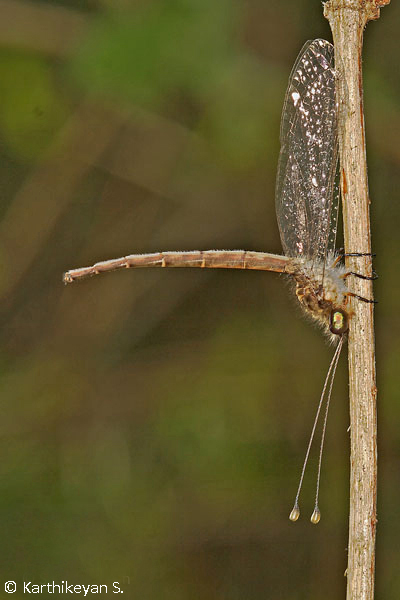
Now that I had the insect in sight, I noticed other features that seemed to be very characteristic.
One distinctive feature was the pair of antennae with swollen tips that looked like match sticks. The presence of the knobbed antennae can help one to easily tell them apart from dragonflies (which have very short wire-like antennae).
The two eyes were very large and they covered most of the head, something akin to the dragonflies that the insect resembled so much. However, the two eyes (each, a compound eye) seemed to be split into two lobes. I have not seen this on any other insect. Maybe, these eyes are the reason this insect got its name Owlfly!
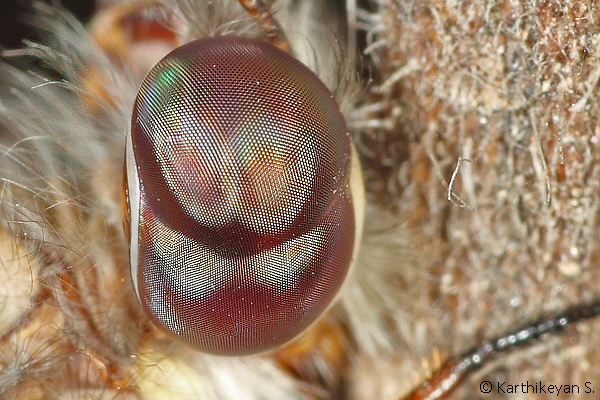 Owflies are lacewings (Order Neuroptera). They are closely related to the Antlions. If you recollect the images from my earlier post, you will notice the similarity between the two. At the same time, you will also see the differences in their eyes and antennae. The larvae of the owlfly look similar with strong menacing mandibles. However, they differ in their behaviours. Owlfly larvae do not make a conical pit. But go about finding prey in leaf litter and trees. They pupate in their life cycle and eventually the adults emerge. As an adult too the owlfly is a predator. It is known to catch insects on the wing! Typically, it is either diurnal or crepuscular.
Owflies are lacewings (Order Neuroptera). They are closely related to the Antlions. If you recollect the images from my earlier post, you will notice the similarity between the two. At the same time, you will also see the differences in their eyes and antennae. The larvae of the owlfly look similar with strong menacing mandibles. However, they differ in their behaviours. Owlfly larvae do not make a conical pit. But go about finding prey in leaf litter and trees. They pupate in their life cycle and eventually the adults emerge. As an adult too the owlfly is a predator. It is known to catch insects on the wing! Typically, it is either diurnal or crepuscular.
Not all owlflies are dull coloured insects.; some could be brightly coloured.
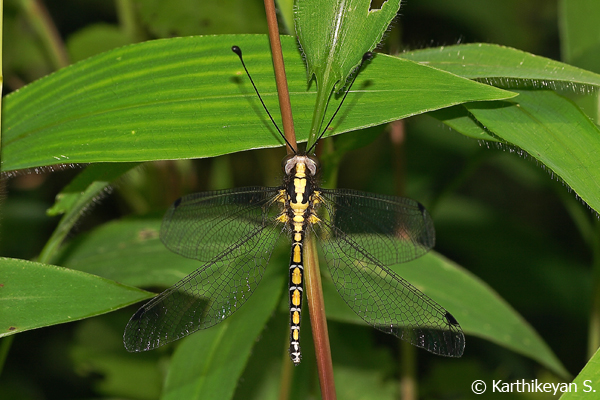
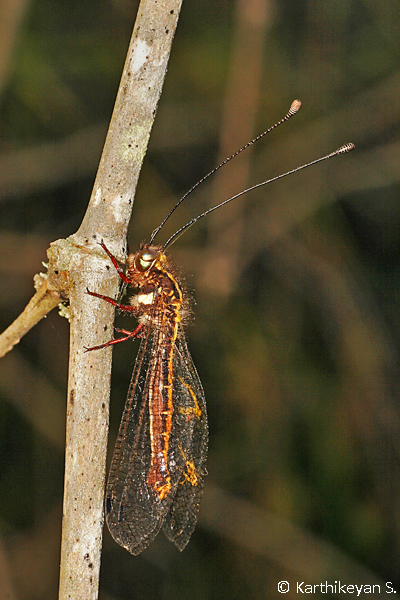
Nor do they always sit upside down.
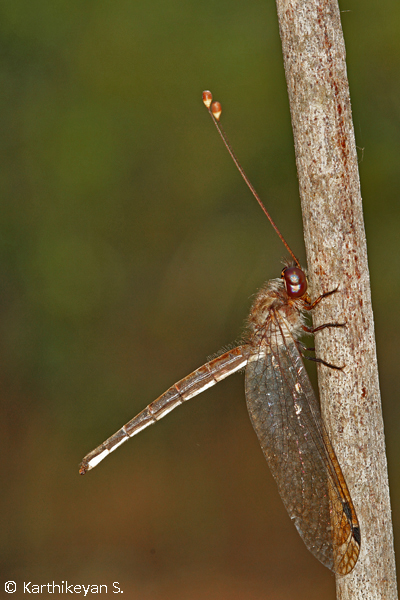
What I have narrated is my experience with these interesting insects. Our understanding of the owlflies is very limited. So, when out there, do keep a look out for these insects, try to observe and document whatever possible when the opportunity provides. Yes, and don’t forget to share your observations with others.
Related article – Mantisfly (https://www.wildwanderer.com/mantisfly/)